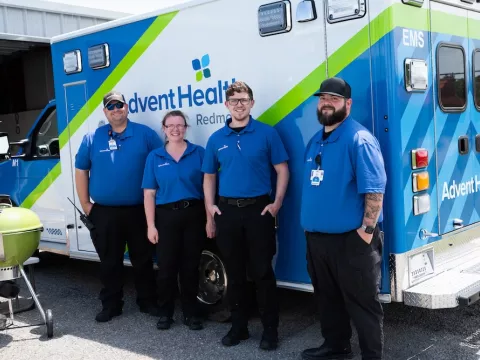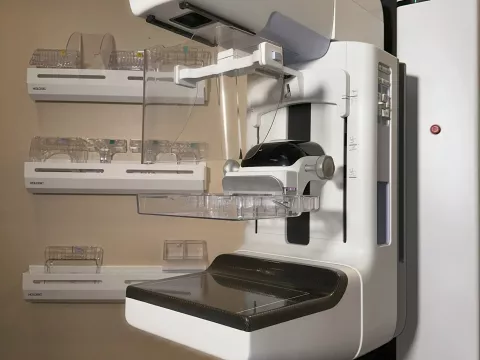- AdventHealth
Safety Tips for Multigenerational Homes During the Pandemic
A record 64 million Americans live in multigenerational households – that’s one in every five U.S. residents with family members ranging from newborns to older adults, all living under one roof. The omnipresent threat of COVID-19 has already heightened concerns for those living in the tiered generation setup, with some finding that keeping vulnerable loved ones safe and emotionally involved can be a challenge. With racial and ethnic minorities more likely to live in a multigenerational home, these challenges can also exacerbate the already disproportionately negative impact of COVID-19 in communities of color.
In this video, Xiomara Hewitt, corporate director of infection prevention and control for AdventHealth, discusses whole-health tips for multigenerational homes such as:
• Best practices for protecting a range of ages within a single household
• Debunk myths that may misguide families in multigenerational homes
• Healthy habits and safety precautions families can adopt to lower their risk of infection and keep the family connected
Read along with the transcript below:
Garrett: Today, we're talking about multigenerational homes and safety in a global pandemic. Our subject matter expert is Xiomara Hewitt, who serves as AdventHealth's Corporate Director of Infection Prevention. Xiomara, you're a specialist in infection control, you have a master's in public health.
Xiomara: That's correct. I'm very blessed to be part of a team that focuses on the infection prevention strategies, not only within our facilities, but also to help our communities to keep themselves safe at any time. But especially now, it’s so crucial during the COVID-19 pandemic.
Garrett: So let me ask you, why are multigenerational homes facing a special set of considerations regarding safety?
Xiomara: Yes, in many cultures it's not uncommon for you to have family members spanning over different generations and different age groups to be living in one household. Because of the virus being transmitted from person to person through the respiratory droplets that are generated through coughing, sneezing, talking, breathing; and in the situation of a multigenerational home or extended family household, you have a very small space increasing the risk.
In addition, from the data that we continue to receive from the Department of Health and Human Services, and the Centers for Disease Control and Prevention. We know that unfortunately, COVID-19 has had a disproportionate impact on some racial and ethnic minority groups. So we have to be really keeping that in mind because it is not uncommon to see in ethnic minority groups, for family members to be living in multigenerational homes.
Garrett: The beautiful thing about a multigenerational home is the warmth of relationships that exists between certain generations, especially between children and their grandparents.
Xiomara: Absolutely.
Garrett: So what should children do? What should grandparents do? A child comes home from school, and they see grandma, they see grandpa there, should they feel like, "Oh no, I have to stay away." Or are there some precautions that they can take?
Xiomara: Oh, absolutely, we don't want to take away from that aspect of that richness of sharing the love and affection to one another. We just need to think about some other ways that we can still show the love through different ways of interacting with each other. A different handshake. My son likes to do the elbow bump. It's very important for us to still feel connected, especially when we have the multigenerational homes. Sharing activities that, if possible, maybe can be done outside.
While the data has shown that the incidents of the illness has not been as high in young children compared to older adults, we want to also remind our community that while they may not be vulnerable, they can put vulnerable people in their household at risk because they can bring the virus into the household. We need to model the good behavior to our children, to our young children, especially in the situation that you mentioned, when you have children coming in from school. So again, helping them, modeling for them to remove your shoes, change your clothes, wash your hands, and then now we can go ahead and interact with grandma or grandpa.
Garrett: So we've been working very hard to keep everyone safe, but there are times when it's inevitable and someone does get sick with COVID-19. How do we keep the rest of the family safe?
Xiomara: Yes, when somebody in the household becomes sick with COVID-19, what is recommended is for the person to stay in one room and limit the physical contact with other members of the household to reduce the chances of transmission. Also, if possible, for the person to use a specific bathroom. Now we know that at times that all of these strategies may not be possible. The household needs to then be very conscientious about cleaning surfaces, cleaning the bathroom more frequently after especially after the sick person uses the bathroom. And if you have to be in the same space in the same room, try to maintain six feet of physical distance and wear a mask. That would then reduce the risk.
We also want to make sure that you think about designating one person who will be taking care of the person who unfortunately became sick. It's not that we don't want other family members to interact with them. Thinking about how you can still connect with that person is very important by the usage of video conferencing. I know it may sound funny doing video conferencing from one room to the other room. Because we still want the person to feel connected and that they're still part of the family. Even though they're physically isolated, we want to make sure that they still feel that they're part of the family because it's very important for their recovery.
Garrett: So we've shared a lot of information today about how to remain safe, which could make someone feel a little anxious and a little worried about being in a multigenerational home environment. But what's the bottom line about both the benefits and the tips to keep in mind when it comes to living in a multigenerational setting in COVID-19?
Xiomara: Multigenerational homes are filled and rich with love. We cannot let the pandemic change that. We may have to do things a little bit differently, but I encourage everyone to still continue to take care of themselves and each other, and that's how we're going to get through this.
Recent News
The AdventHealth Orchestra traveled to Washington, D.C., to perform at the Kennedy Center as part of the Capital Orchestra Festival.
A man who nearly lost his battle with COVID-19 in 2021 returned to the AdventHealth Castle Rock ICU to thank the care team that saved his life.
AdventHealth Celebration is prioritizing nutrition and sustainability through an innovative program at the hospital. Leaders are utilizing a Freight Farm to grow produce.
Daylight saving time is a day many either love or hate -- you lose sleep but gain more daylight. What you might not know is that turning the clocks forward also brings some health risks.
In an alarming trend, strokes are increasingly affecting younger adults, a shift driven by rising controllable risk factors.
AdventHealth Redmond EMS believes building community trust goes far beyond its primary role of providing emergency services.
In smaller communities, health care services can often be limited, forcing residents to travel long distances for essential screenings.
ShorePoint Health Port Charlotte in Port Charlotte, Florida, has joined AdventHealth, one of the largest faith-based health systems in the United States.
This is the first initiative to place AEDs on buses in Orlando and one of the first times the technology has been implemented on public transit in the U.S.
A woman who was hospitalized with a heart attack after ignoring the warning signs for a week is urging others to not wait as long as she did to seek help.
Music therapy has become more widely known as neuroscience research on the connections between music and brain function has grown.
Days before competing in the DAYTONA 500, driver Erik Jones visited a Central Florida elementary school to deliver a big surprise.













